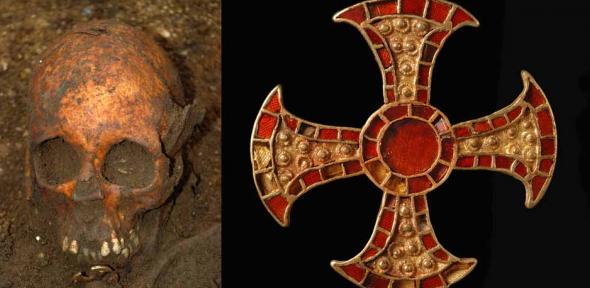
Artifacts from a 7th century grave of a teenage Anglo-Saxon girl found near Cambridge, England in 2012.
<http://www.cam.ac.uk/research/news/mystery-of-anglo-saxon-teen-buried-in-bed-with-gold-cross>
Before I continue with part 7 of the current blog, I find I need to step back and do some more research on the iconography of trees and wood for the Anglo-Saxons since it spans pagan and Christians periods.
Also I needed to go back to read Elene by Cynewulf (in translation since I cannot read Old English). Somehow I missed it in English literature classes. But I suspect that is because the poem by Cynewulf was deemed "too Christian." Instead we had a read Beowulf in a not very good translation. I never grasped the structure of the original nor its use of alliteration. More modern translations come closer to giving a sense of the original poem.
I wanted to back to reread Barbara C. Raw's seminal book Anglo-Saxon Crucifixion Iconography and the Art of the Monastic Revival. There have been quite a number of newer works that have expanded her work that I needed to read. Since the Jesse Tree design falls so much into the Anglo-Saxon tradition of iconography and not narrative design, I wanted to explore more before I added anything more to a world already too crowded with words that lack any thought.

Crucifixion from Holy Rood Church, Daglingworth, Gloucestershire. Though Christ in on the cross, he is not a figure of suffering but one nimbed in majesty. 10th century.
<http://www.britainexpress.com/images/attractions/editor/Daglingworth-2534.jpg>
No comments:
Post a Comment